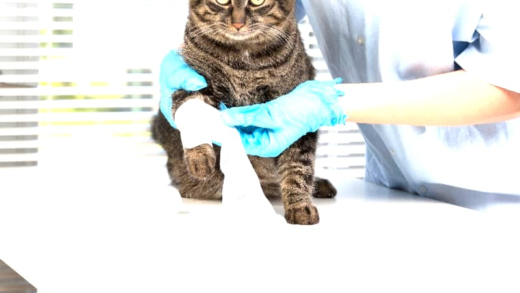Petroleum jelly is a versatile product with numerous applications in skincare, household uses, and even pet care. It acts as a moisture barrier, aids in healing minor injuries, and can be creatively used in crafts. While generally safe for pets, it should be used cautiously. Additionally, it plays a significant role in tattoo care and offers practical tips for effective use.
What is Petroleum Jelly?
Petroleum jelly, a popular skincare product, consists of a mixture of mineral oils and waxes. This semi-solid substance is derived from petroleum, making it an excellent moisture barrier. During the manufacturing process, crude oil undergoes a refining process to remove impurities and create a safe, effective product for various uses.
The composition of petroleum jelly includes hydrocarbons, primarily saturated hydrocarbons, which contribute to its unique properties. These hydrocarbons create a protective layer on the skin, preventing moisture loss and aiding in healing.
Historical Uses of Petroleum Jelly
Petroleum jelly has a rich history, dating back to the 19th century. Originally discovered by Robert Chesebrough in 1859, it was first used by oil workers who found that it helped heal their cuts and burns. Chesebrough then patented the substance, branding it as “Vaseline.” Since then, petroleum jelly has evolved into a household staple.
Historically, this versatile substance has been used in various applications, from medical ointments to cosmetics. Its popularity surged during World War I, as soldiers relied on it for wound care. Today, it remains a trusted product for healing minor injuries and maintaining skin health.
Skincare Beyond Lip Care
While many people associate petroleum jelly with lip care, its uses extend far beyond that. This multi-functional product can be incorporated into various skincare routines to enhance moisture retention and protect the skin.
- Moisturizing Dry Skin: Applying petroleum jelly to dry patches can provide instant relief and hydration.
- Preventing Chafing: A layer of petroleum jelly can help reduce friction during physical activities, preventing chafing.
- Enhancing Makeup: Using petroleum jelly as a primer can create a dewy finish for makeup.
In summary, petroleum jelly is a versatile product with applications in skincare that go beyond just lip care. Its ability to lock in moisture and protect the skin makes it a valuable addition to any beauty routine.
Healing Minor Cuts and Scrapes
Petroleum jelly is an effective solution for healing minor cuts and scrapes. Its occlusive properties create a barrier that locks in moisture, which is crucial for the healing process. When you apply petroleum jelly to a fresh wound, it helps to keep the area hydrated and prevents scabs from forming too quickly. This is important because scabs can impede the healing of the skin underneath.
Additionally, petroleum jelly acts as a protective layer against bacteria and dirt, reducing the risk of infection. For best results, clean the wound gently, apply a thin layer of petroleum jelly, and cover it with a bandage. This method not only speeds up healing but also minimizes scarring.
- Moisture Retention: Keeps the wound moist, promoting faster healing.
- Infection Prevention: Acts as a barrier against harmful pathogens.
- Scarring Reduction: Lessens the chance of noticeable scars.
Household Uses for Petroleum Jelly
Petroleum jelly isn’t just for skincare; it has numerous practical applications around the home. This versatile product can simplify many household tasks, making it a must-have item.
Here are some innovative ways to use petroleum jelly at home:
- Lubricating Stuck Zippers: A small dab can help a stuck zipper glide smoothly.
- Protecting Tools: Apply to tools to prevent rust and corrosion.
- Furniture Polish: A little petroleum jelly can bring shine back to wooden furniture.
- Preventing Paint Stains: Rub it on surfaces before painting to avoid unwanted splatters.
- Moisture Barrier for Leather: Use on leather goods to keep them supple and protected.
These practical uses demonstrate how petroleum jelly can be a valuable addition to your household toolkit, helping with everything from maintenance to protection.
Incorporating Petroleum Jelly into Beauty Routines
Petroleum jelly can play a crucial role in enhancing beauty routines. Its ability to lock in moisture and provide a protective barrier makes it a versatile ingredient in various beauty applications.
Here are some creative ways to incorporate petroleum jelly into your beauty regimen:
- Makeup Remover: It effectively dissolves makeup while moisturizing the skin.
- Eyebrow Gel: Use it to tame unruly brows for a polished look.
- Highlighter: Apply a small amount on cheekbones for a natural glow.
- Cuticle Care: Moisturizes and softens cuticles, promoting healthy nails.
- Foot Care: Apply before bed to soften dry, cracked heels.
Incorporating petroleum jelly into your beauty routine can enhance your skin’s appearance while providing added hydration and protection. Its multifunctionality makes it a beauty staple worth having on hand.
Is Petroleum Jelly Safe for Pets?
Petroleum jelly is generally safe for pets when used correctly. Many pet owners utilize petroleum jelly for minor skin irritations or dry paws, as it can help soothe and protect their furry friends. However, it is crucial to ensure that pets do not ingest large amounts of the substance, as it may lead to gastrointestinal upset.
When applying petroleum jelly on pets, it is important to follow these guidelines:
- Use Sparingly: Apply a thin layer to affected areas, avoiding excessive use.
- Monitor Reactions: Watch for any adverse reactions, such as itching or redness.
- Consult a Vet: Always consult with a veterinarian before introducing any new products into your pet’s care routine.
In conclusion, while petroleum jelly can be beneficial for pets, it should be used cautiously and under veterinary guidance to ensure their safety.
How Petroleum Jelly Works as a Moisture Barrier
Petroleum jelly acts as an effective moisture barrier, creating a protective layer on the skin that prevents water loss. This barrier is crucial for maintaining skin hydration, especially in dry or harsh environments. When applied, petroleum jelly traps moisture in the skin, allowing it to stay hydrated for longer periods.
The science behind its effectiveness lies in its occlusive properties. Here’s how it works:
- Locks in Moisture: By forming a barrier, it keeps moisture from escaping, making it ideal for dry skin.
- Protects Against Irritants: It shields the skin from external irritants, reducing the risk of inflammation.
- Promotes Healing: The moisture-retaining properties aid in the healing of cuts and scrapes, allowing the skin to repair itself more efficiently.
Understanding how petroleum jelly functions as a moisture barrier highlights its value in skincare and everyday uses.
Unique Craft Ideas with Petroleum Jelly
Petroleum jelly can be a surprising ally in various craft projects. Its versatility extends beyond skincare, making it a useful ingredient in creative endeavors. Here are some unique craft ideas:
- DIY Candle Molds: Use petroleum jelly to coat molds for homemade candles to ensure easy release.
- Waterproofing Items: Coat items like paper or fabric to create waterproof crafts.
- Creating Texture: Mix with paint to add texture to art projects, enhancing visual appeal.
- Lubricating Art Supplies: Apply to scissors or other tools to prevent rust and maintain smooth operation.
These ideas showcase how petroleum jelly can be creatively incorporated into various crafting projects, expanding its utility.
Benefits for Tattoo Care
Using petroleum jelly for tattoo care offers numerous benefits. After getting a tattoo, it’s essential to protect the area to promote healing and maintain vibrancy. Here’s how petroleum jelly can help:
- Moisturizes: It keeps the tattooed skin moisturized, preventing dryness and flaking.
- Protects from Infection: The barrier it creates helps shield the tattoo from bacteria and dirt.
- Enhances Color: Applying a thin layer can help maintain the tattoo’s color and brightness during the healing process.
For best results, apply petroleum jelly to a healed tattoo, ensuring it does not suffocate the skin but provides adequate hydration and protection.
Tips and Tricks for Effective Use
Maximizing the benefits of petroleum jelly involves understanding how to use it effectively. Here are some practical tips:
- Apply on Damp Skin: For better absorption, apply petroleum jelly on slightly damp skin after bathing.
- Use as a Barrier: Apply before engaging in activities like swimming or hiking to protect skin from harsh elements.
- Mix with Other Products: Combine with essential oils or lotions for added benefits and scents.
- Store Properly: Keep in a cool, dry place to maintain its consistency and effectiveness.
Following these tips will help you get the most out of petroleum jelly, ensuring it serves its purpose effectively in your skincare and daily routine.





Comments are closed.